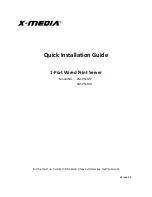
38
Chapter 3
Teststation
Teststation file system
Teststation file system
The /spp directory located on the workstation’s local disk (HP-UX version
10.20) contains all the necessary files necessary for the workstation to
function as the V-Class server’s teststation.
Figure 10
Teststation file system
/spp/etc
The /spp/etc directory contains many of the unique daemons which run
on the teststation. These daemons provide services in the management of
the V-Class node. Two daemons that are always running on the
teststation are:
cmd
The complex configuration management daemon that
builds the configuration file /spp/data/node_0.cfg.
conserver
The console-server that directs RS-232 console traffic
from the Utility Board to the upper right console
window on the teststation.
/spp
etc
(spp specific daemons)
bin
(compiled executables)
scripts
(executable scripts)
data
(log and config files)
firmware
(firmware directory)
est
(support for scan testing)
man
(Man pages for /spp commands)
unsupported (unsupported utilities)
Summary of Contents for 9000 V-Class
Page 4: ......
Page 10: ...x List of Tables ...
Page 12: ...xii List of Figures ...
Page 26: ...12 Chapter1 Overview Shared memory ...
Page 66: ...52 Chapter4 Firmware OBP and PDC HElp command ...
Page 112: ...98 Chapter7 Recovering from failures Abnormal system shutdowns ...
Page 116: ...102 Index X X tool menu 30 ...
















































